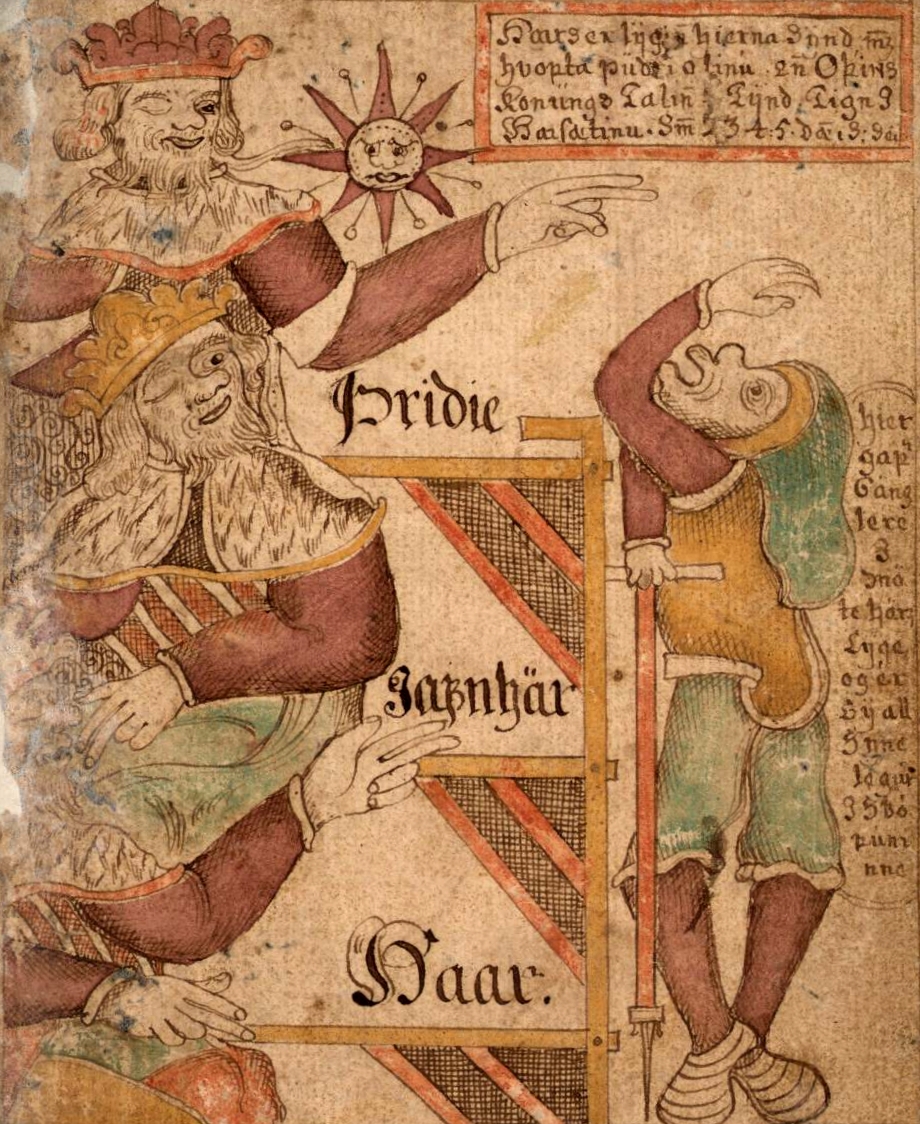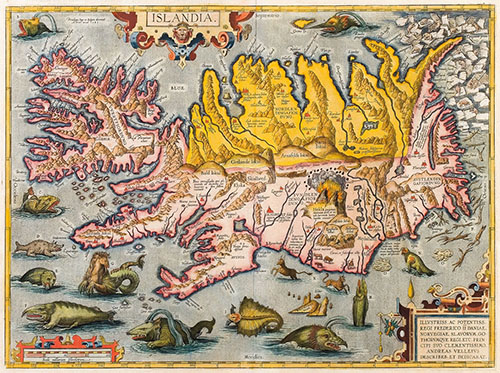History of Iceland, Vikings to early 19th century
Iceland was a largely uninhabited island in the northern Atlantic Ocean where Norsemen settled around 870. It began as a ‘free state’ but became a Norwegian province in the years 1262/64. As a dependency of Norway, Iceland came under the Danish-Norwegian Crown in 1380 and was in reality a Danish dependency from 1660. During the course of the 19th century, Icelanders strove for emancipation from Denmark, and gradually the country achieved greater independence.

Viking Age settlements in Iceland
The discovery of Iceland should be understood in the context of the general expansion of the Viking Age and settlements in new undeveloped lands in the north. Iceland was settled by mainly Norwegians who came either directly from Norway or via the British Isles. Medieval sources say Iceland was uninhabited at that time, but there were probably a few Irish monks in the country. According to the oldest Icelandic history book, Ari Fróði's (1067-1148) Íslendingabók from about 1130, the monks fled when the land was settled by people from western Norway in the late 9th century.
There are a number of accounts of Iceland’s early history and, together with archaeological evidence, they provide a wealth of knowledge. The sagas of Icelanders also known as the ‘family sagas’, recorded in the 12th and 14th centuries, are the best known of the written sources. They deal mainly with the 9th century and combined an oral storytelling tradition about the country's first settlement with the culture of Christian scripture that flourished in Iceland during the time of writing.
Iceland as a free state 930-1264 and the Norwegian period 1264-1380
According to Íslendingabók, the country first had a common assembly in the form of a nationwide ‘ting’, the Alþingi Íslands (the Iceland Althing), in 930. The Althing has been given the label of the world's oldest parliament. It had legislative and judicial, but not executive, power. The 'ting' was founded on a union of 36 chieftaincies. In this society, which had no king or central executive power, the actual legislative and judicial power lay with the chiefs.
This type of rule, known as the free state (930-1264), was strongly shaped by Christianity, which was introduced as an official religion around the year 1000, when the Althing publicly adopted the Christian faith without any particular resistance. In 1097, tithes were introduced which were partly administered by the churches. In 1056 a bishop was appointed in the south and, in 1106, one in northern Iceland.
After major internal disputes among the most influential families in Iceland in the 13th century, Icelanders became subjects of the Norwegian crown from 1262/64. They were obliged to pay tax to the Norwegian king, the old rule of chiefs was abolished, and part of the Icelandic upper class took its place. It is during this Norwegian period that most Icelandic saga literature is written.

Map of Iceland around 1590 in collection of Abraham Ortelius. Picture: Public Domain, Wikimedia.
Iceland under Danish-Norwegian rule from 1380
The political development in Iceland followed the general trends in the Nordic countries. In 1380 Denmark and Norway were united under one king, which brought Iceland under Danish rule. Iceland and Denmark were joined under one monarchy. This meant that, after the Reformation, Iceland became Protestant like the rest of Denmark-Norway. The church became Evangelical Lutheran in 1551, and the introduction of Lutheranism strengthened the Danish kings' authority in Iceland as in other parts of the Danish kingdom. The confiscation of the church's goods in connection with the Reformation led to the king being the largest landowner in Iceland.
In 1602, Denmark introduced a trade monopoly in Iceland. It was largely based on the majority of Icelandic trade being restricted to mainly specific Danish ports, and reducing the competition between merchants. It lasted until 1786, when the monopoly was relaxed as Danish subjects in general were allowed to trade in Iceland. In 1855, the Danish trade monopoly in Iceland was abolished altogether.
Absolute monarchy was introduced in Denmark-Norway in 1660 and two years later in Iceland. In the coming centuries, Iceland was administered directly from Copenhagen as a fiefdom. The Althing, however, maintained a measure of authority independent of the Danish government, partly because of Iceland's remote location. In 1800, the Althing was abolished due to the introduction of the Danish legal system, and instead a High Court in Reykjavík was established.
The population fell drastically during the 15th century when hard times, including two plague epidemics, all but laid waste to Iceland. At the same time, the ecological system gradually collapsed in the 15th and 16th centuries due to a colder climate and over-exploitation of vegetation. For centuries, the settlement was spread across the country, and the population made a living farming and fishing. In the 1700s, smallpox epidemics, volcanic eruptions and the harsh climate caused the population to fall again. Yet, with the increasing importance of fishing in the 19th century, the country saw growth again and more coastal towns emerged.
Read about the next chapter in Iceland’s history by clicking the link to the next article: History of Iceland, 1840s to the Second World War.
Further Reading:
- Guðmundur Hálfdánarson, Historical Dictionary of Iceland (European Historical Dictionaries; 1997).
- Gunnar Karlsson, Iceland´s 1100 Years. The History of a Marginal Society (United Kingdom: Hurst & Co, 2000).
Links: